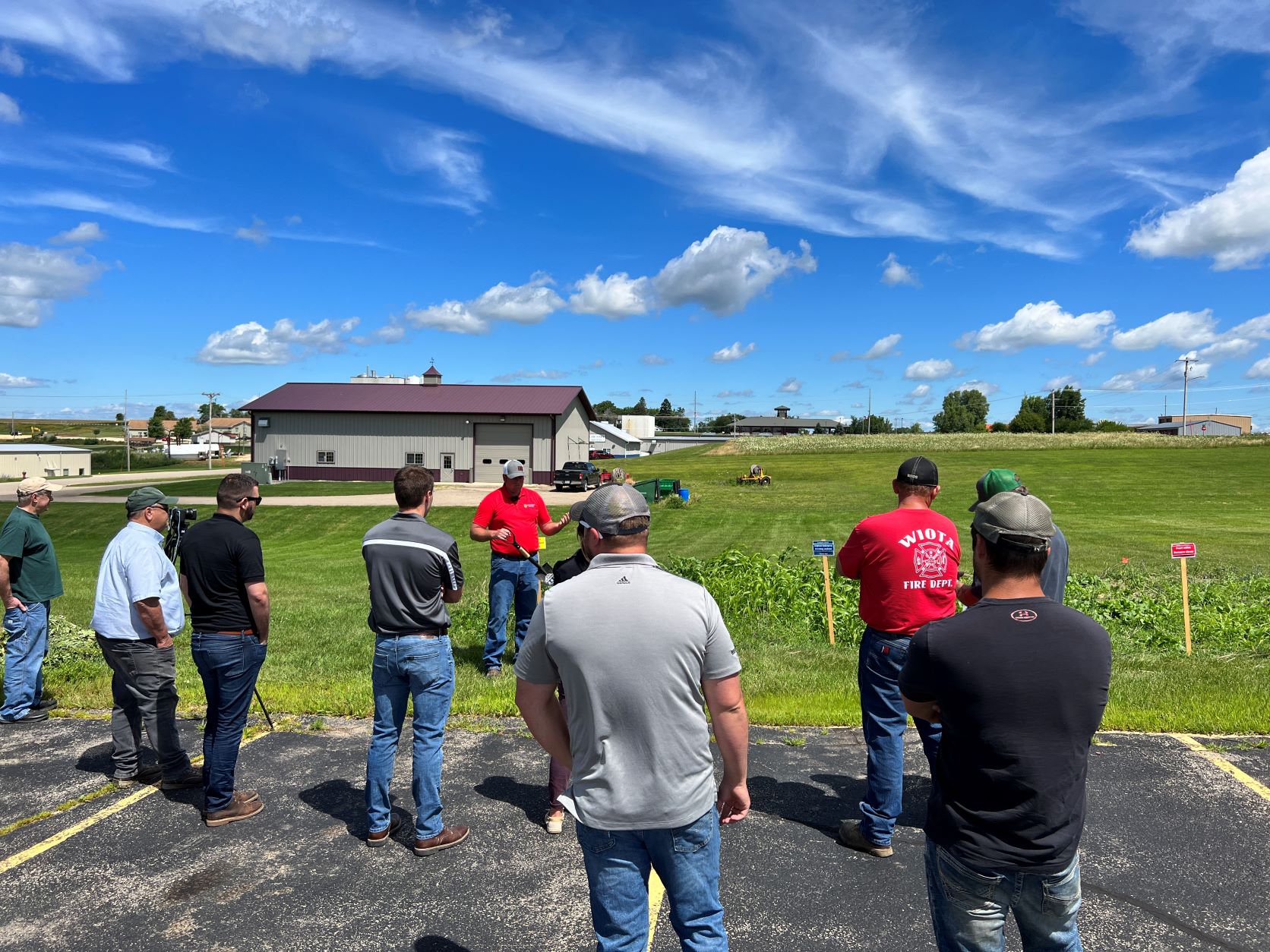
By Anne Moore
UW-Extension-Lafayette County partnered with the Lafayette Ag Stewardship Alliance (LASA) and The Nature Conservancy to host a ‘Hot Cover Crops’ field day in late July at the at the USDA building in Darlington, Wis.
Josh Kamps is the crops and soils extension educator for UW-Extension-Lafayette County. He encouraged attendees to walk in and around the sample plot to check out the cover crops planted. He had a variety of plants displayed farmers can grow to improve and protect soil, increase water infiltration and also handle hot weather.
A few cover crops highlighted were sorghum Sudangrass, Cowpea and Berseem clover. The sorghum Sudangrass has an aggressive root system. Its advantage is its ability to break up layers of soil compaction and access soil organisms to help feed the plant. The Cowpea is a warm-season legume, with several nodules on its roots. It’s a good high-quality forage that can be fed to livestock. Additionally, it can fix a tremendous amount of nitrogen in the soil. The Berseem clover is similar to alfalfa. It's a legume that also thrives in hot weather. It's high-quality clover forage that can be planted in the heat of summer.
Kamps uses this field plot to demonstrate crops growing in the heat of summer and have some conservation practices on display for farmers to come and see when they stop by the USDA building.
“It's my hope that we may try some of these (different crops) to help diversify our landscape in our soils,” Kamps said.
